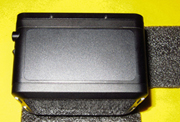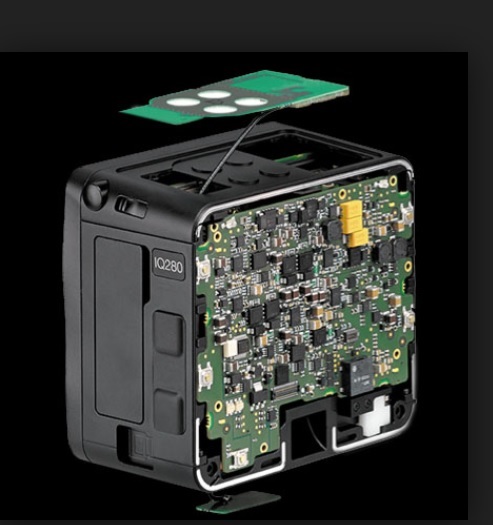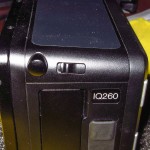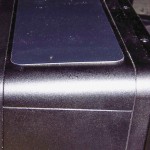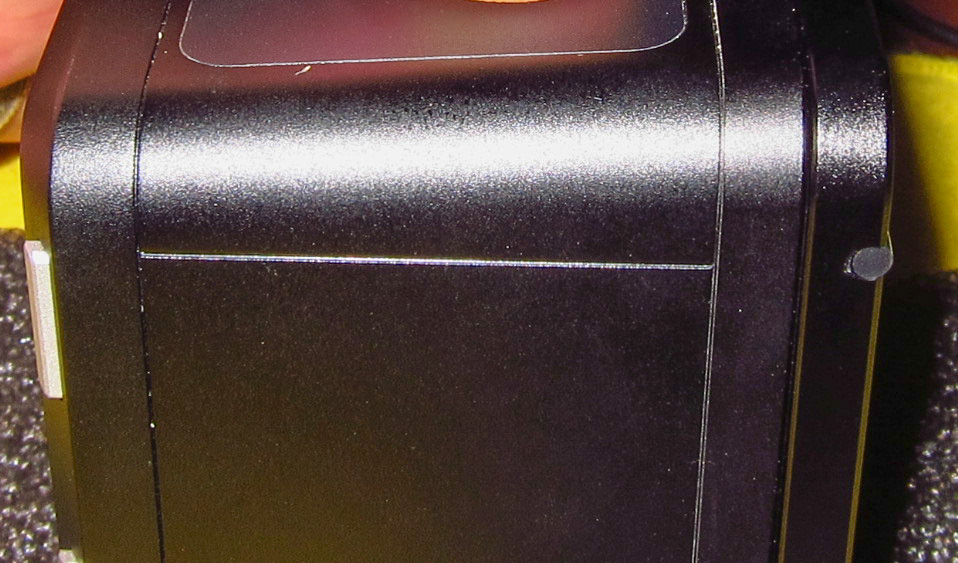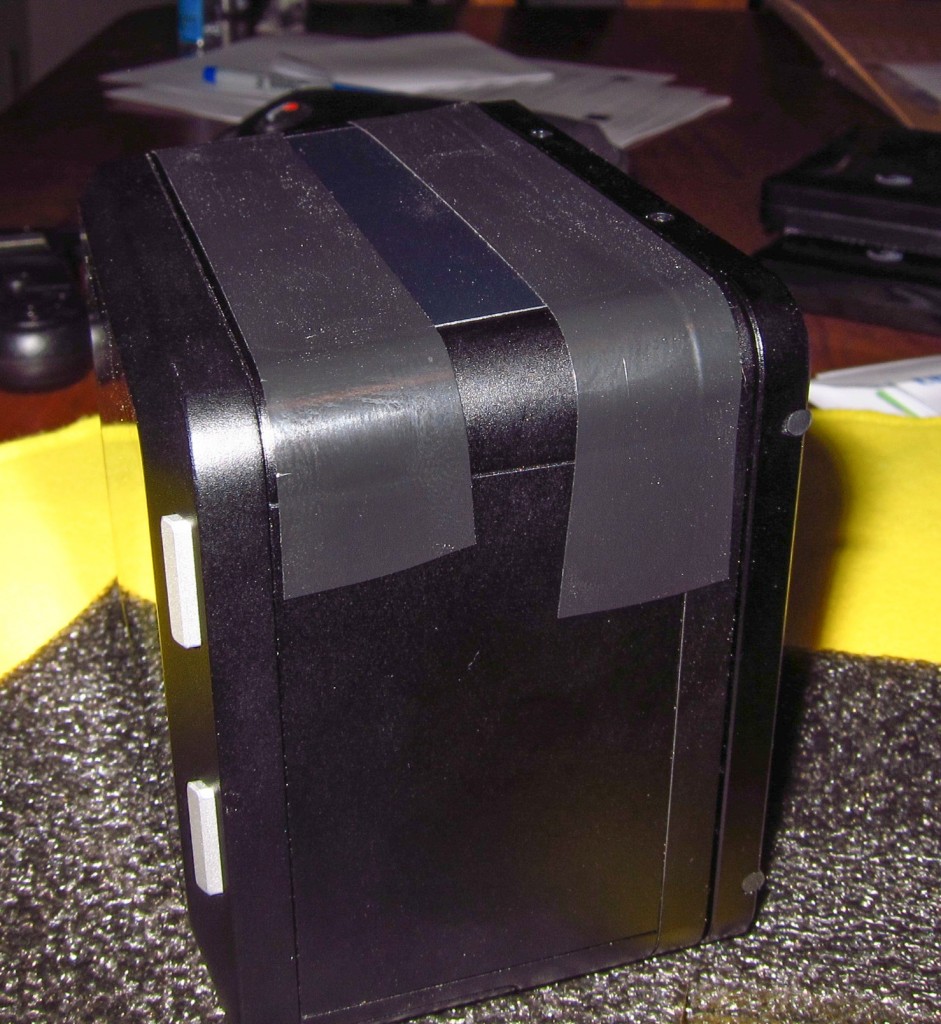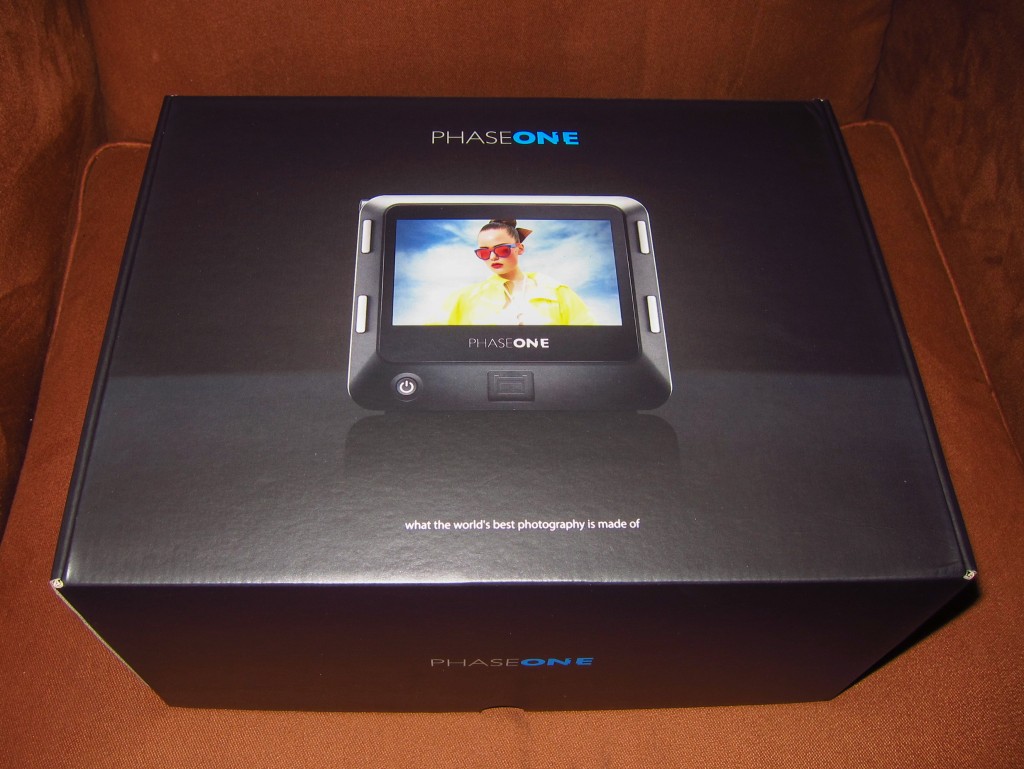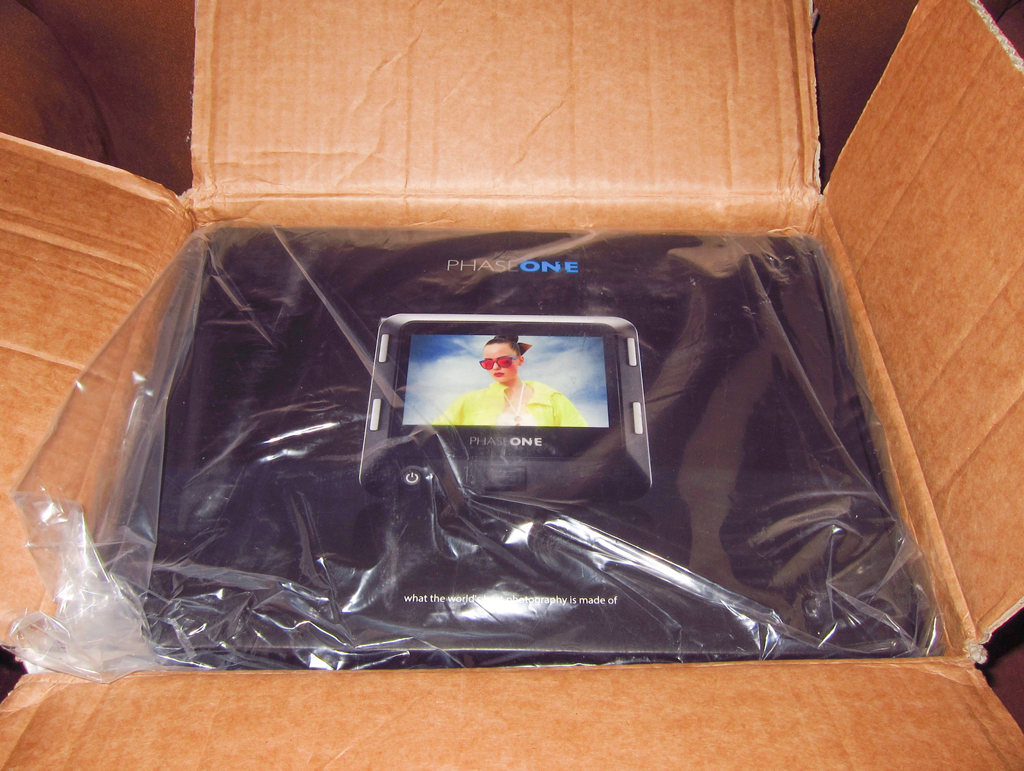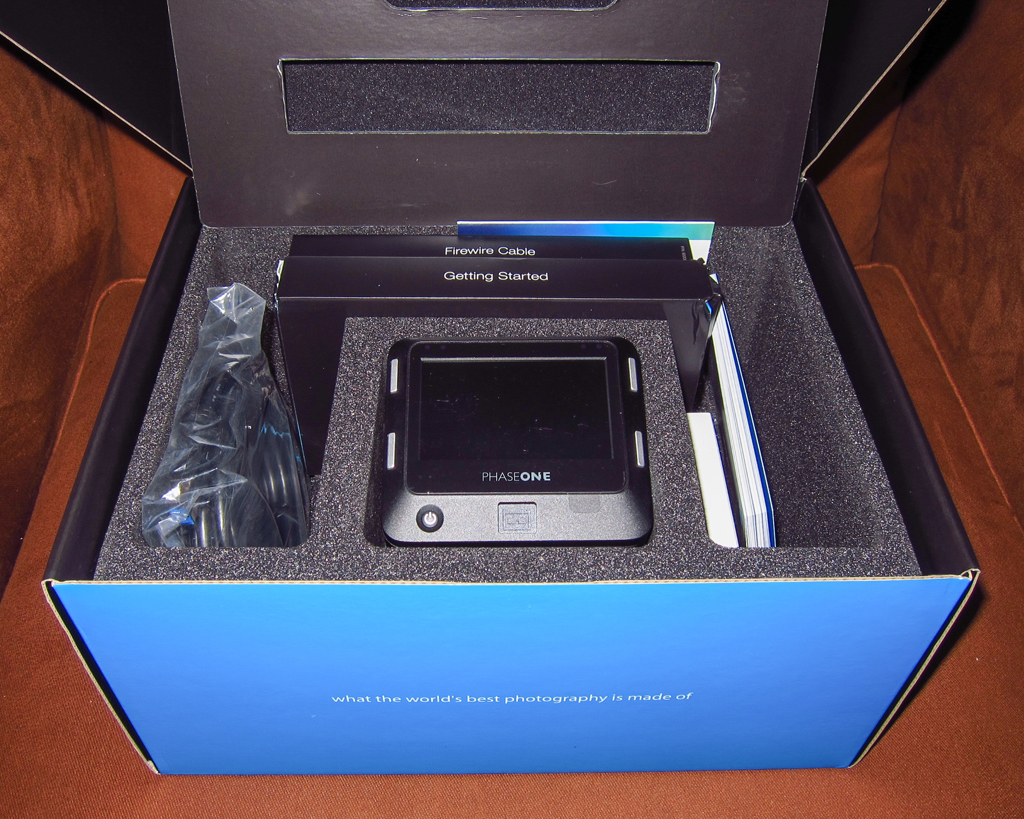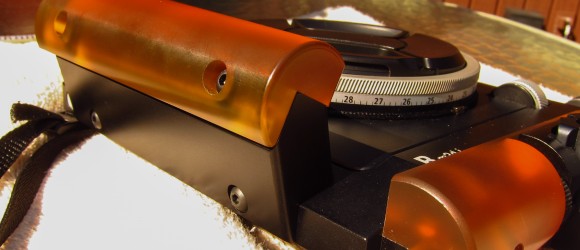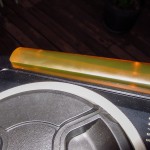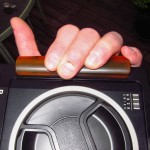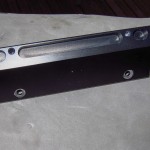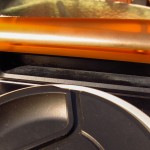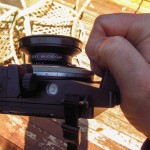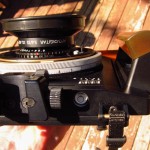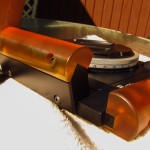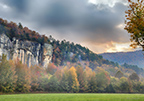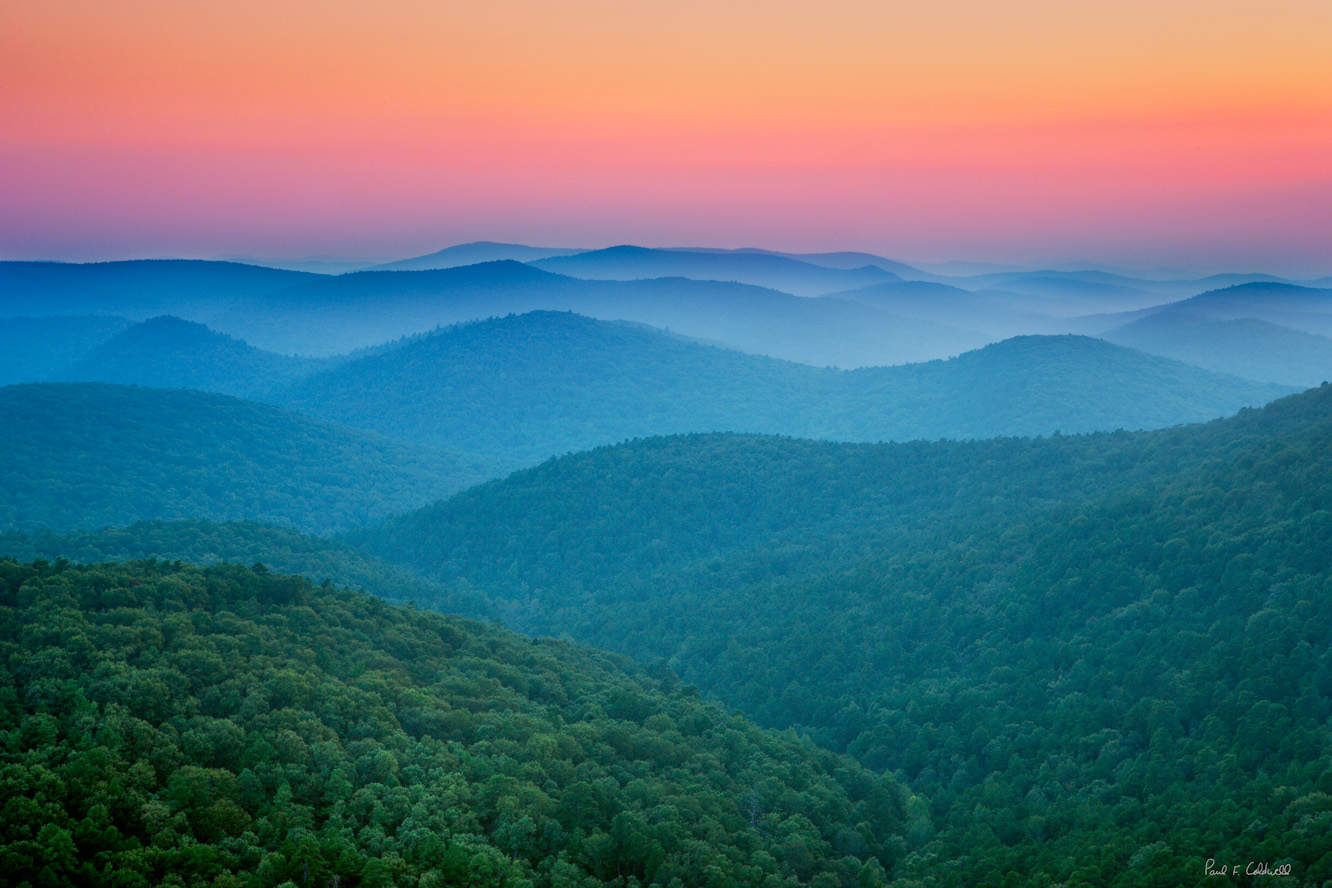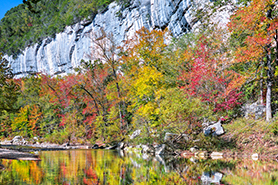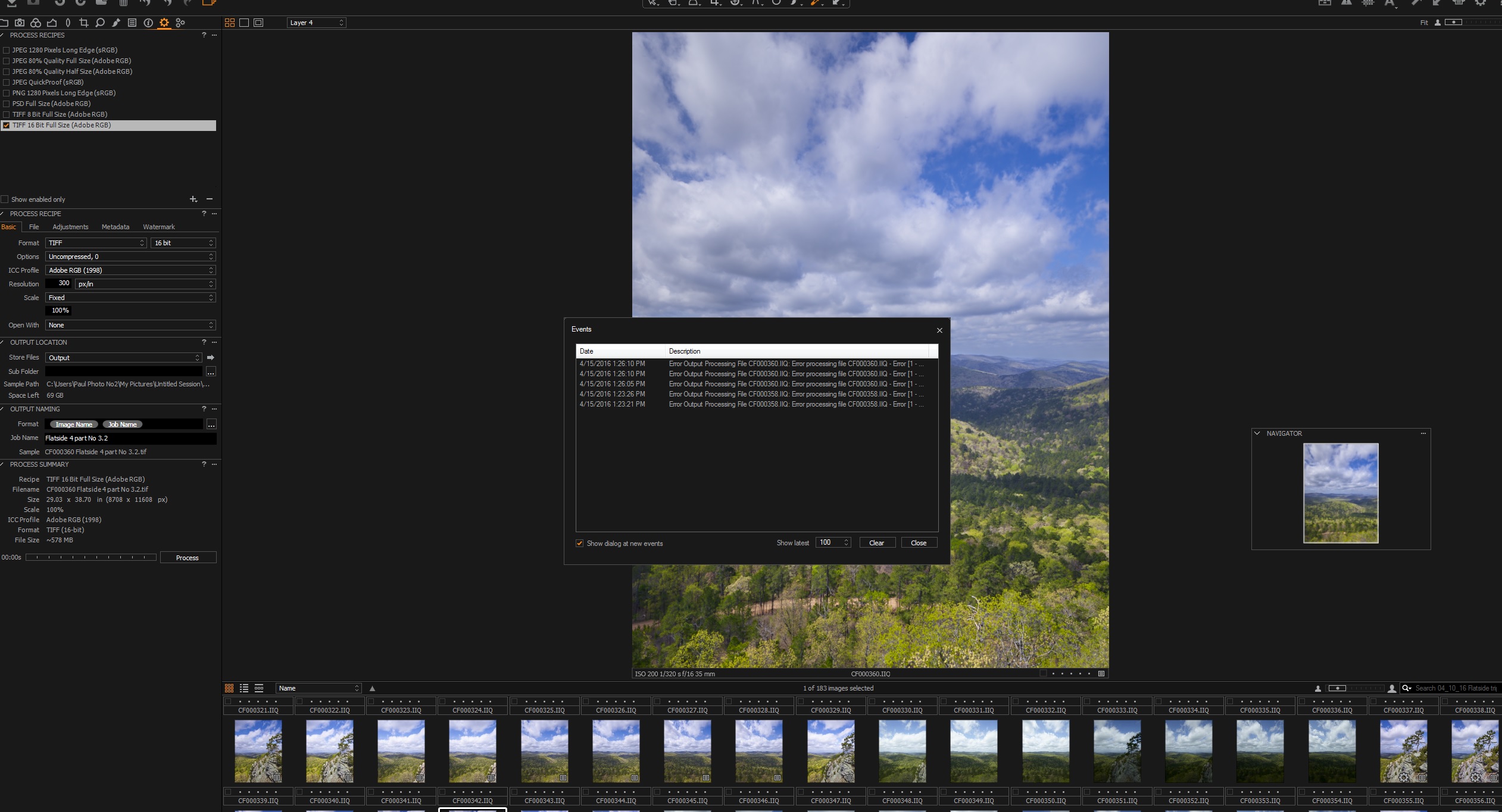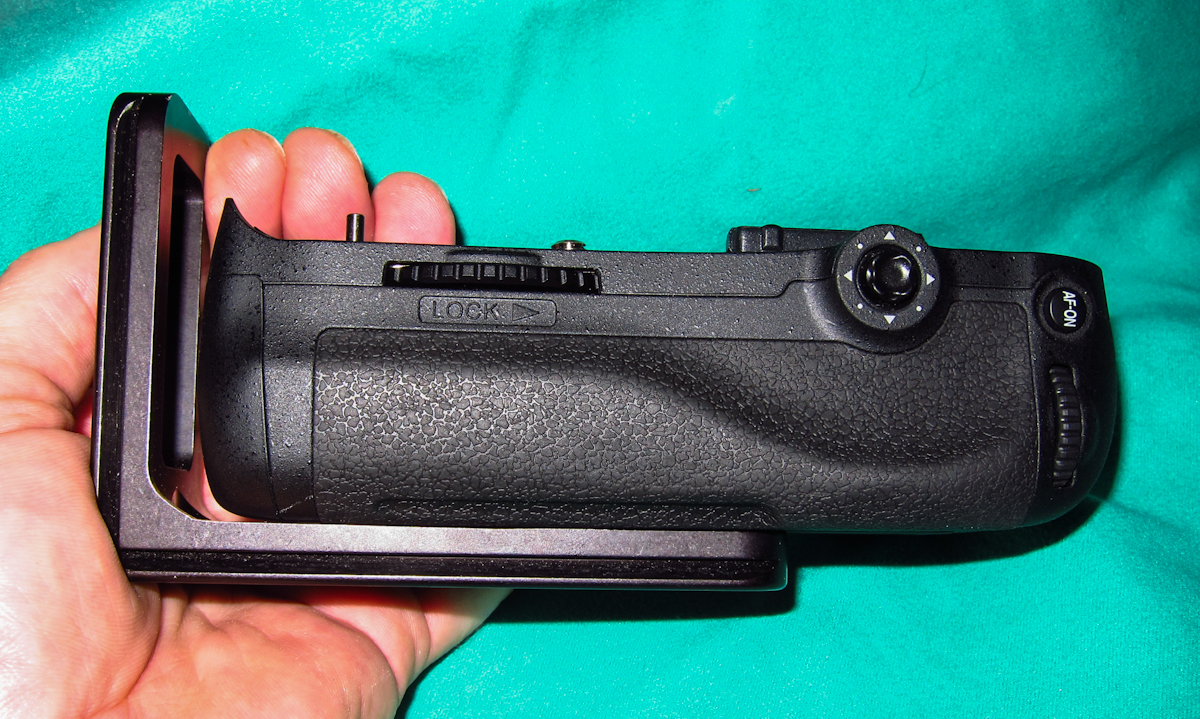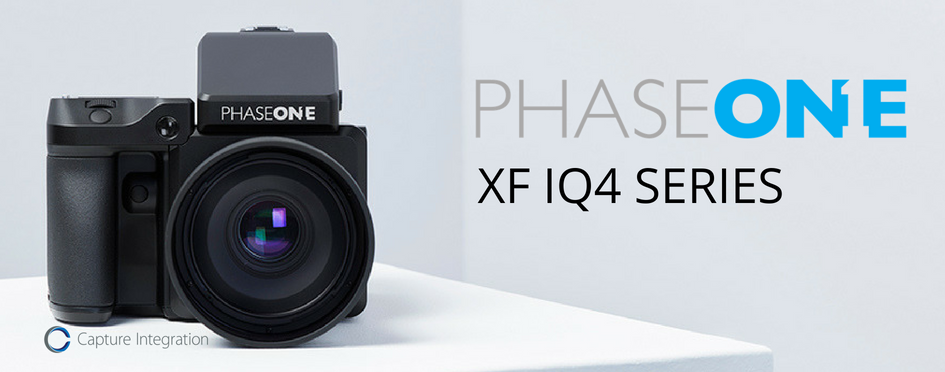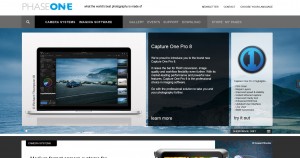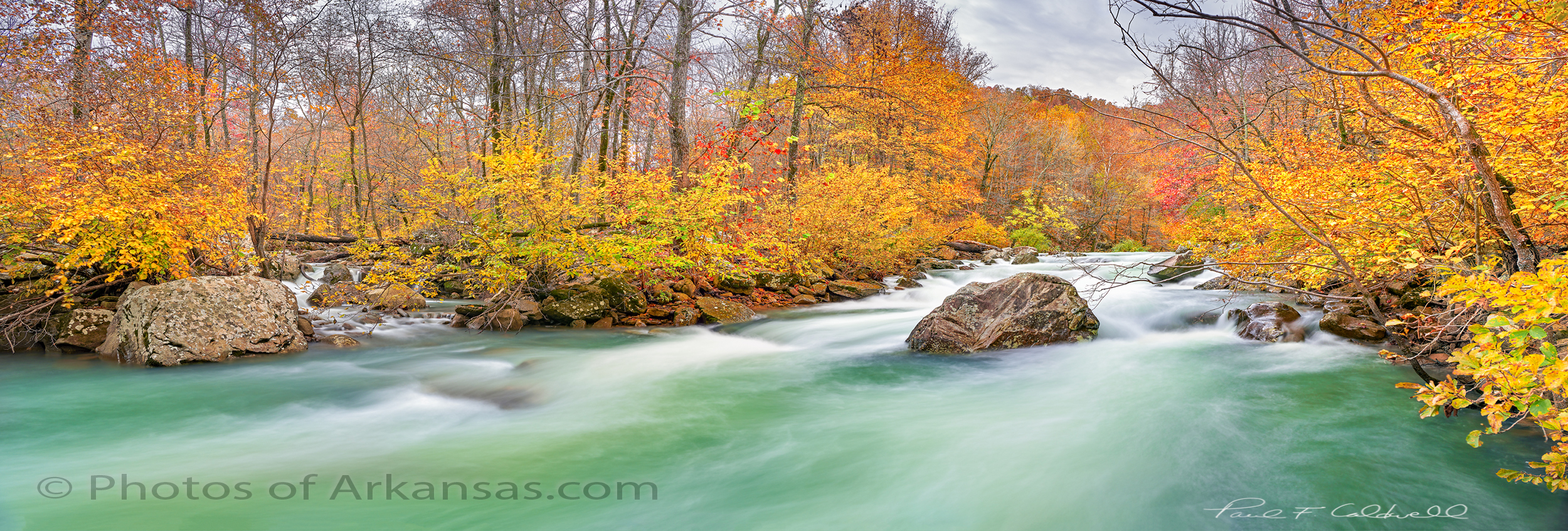01/04/14 Some issues for IQ260 and IQ280 owners on the Wifi top cover
This only applies to photographers that purchased a IQ260 (possibly IQ280) early in the product life. I would say back to about July to October of 2013.
One of the features of the IQ2 backs is the built in Wifi capabilities. When you first get the back, you will notice that the top has a rather large plastic rectangular piece. You can clearly see this in the photo below:
With the older IQ140, 160 and 180, this part of the back was solid and there was no plastic top. However with the placement of the WiFi Card on the top, Phase had to apparently cut the top open to allow for signal strength. As you can see from the next picture that there was probably no way to place this card on the bottom of the back and it’s appears to be too large to go down the side.
So instead of the hard shell across the top you now have a ridge plastic piece that fits into the rounded cut out. This piece should be flush to the top and not have any raised edges.
I had noticed a post on the Luminous Landscape forum where someone had tried out a used IQ260 and noticed that the top piece was raised and it was possible to feel a gap between the edge of the frame of the back and this cover. It’s interesting to note that since I purchased my back in March of 2013 and took delivery in mid August of 2013, I have had it out in the field at least 20 times now. I have used it on hot days and cold ones and only in passing had noticed this plastic top on the back. However until I read the the post, I had never really checked to see if my plate was fitting flush to the top.
Curious I checked my back and noticed immediately that from the back where the LCD is, the entire right side of my top plate had indeed raised up a considerable amount. You can see the difference between the right and left sides in these two photos.
- Left side my my IQ260 showing edge of WiFi cover
- Right side of my IQ260 showing top of cover and gapping
I attempted to push the plate back down, but in a minute or two the plate had pushed back up to the same position. The top plate had raised up enough that I could easily catch it with my fingernail and feel it trying to pull up. The plate was loose and what concerned me more was the fact that it might now somehow have compromised the integrity of the seals for the back. I have more to show on this in a different post, as I had been getting some fogging on the inside of my LCD for sometime now.
With a simple push you can get the top plate to go back down, but as mentioned before it’s not going to stay there. I don’t know exactly how long my back had been doing this and this surprises me as I am usually pretty quick to see such things. If I had been using a Phase One DF+ body with the back, I could easily have missed this since the viewfinder of the DF+ comes right over the top of the back, but with the Arca rm3di that I use the back sits out at a 90 degree angle to the camera and nothing covers this piece.
As you can see in this shot, with simple pressure you can get the plate to go back to the original position but of course you can’t keep pressure on it and I was a bit worried that pressure might not be the best idea since you might be pushing down on the wifi card also. From the pictures of the card on the Phase One website it appears that the wifi controller card is directly below the plate. The other issue is that the plate is surrounded by the hard metal of the back so if anything does push on this part of the back, the plate will give in long before the back frame does. NET: Don’t drop this back on it’s top. I have a few ideas for mine since I am always in the field and protection is important.
I have one other concern that I have not heard back from my dealer or Phase One yet. What is the amount of weather sealing that this plate is given? I am a outdoor photographer, not indoor and my older P45+ or IQ160 was pretty much bombproof. I had 2 close calls with my P45+ and neither time did have any damage. If anything the 160 was even stronger than the P45+, the only areas that really need protection being the LCD and the sensor. Working outdoors, it’s always possible for a errant drop of moisture to hit the top of the back. In fact it’s more possible than not. Have you ever worked in the woods directly after a rain? Drops are constantly coming down and they are going to hit the flat top of this back really quickly. The older IQ160 does not have an issue here since there is no opening, just the metal frame. Now you have a huge opening almost all the way around the top of the back and the opening has a small gap (even when the plate is where it should be). Water will always seek and find the weakest part of a seal and it will also get down into the gap no matter what you do. I can only hope that there is very tight (well mine was not very tight) weather seal on this plate. This would be one way to fix it, but it’s rather ugly and I am hoping to hear back from Phase One that the correctly mounted plate can handle a few drops of water.
This whole issue caused me to email my Digital Transitions (DT )Rep, who quickly put me in contact with one of the dedicated technical support staff with DT. Scott, one of the techs at DT, took my information and opened a case with Phase One. About the same time I found another forum post where Phase One had responded to another user informing them that the first round of backs released to the field (mine was one of them) had a different method of attaching the WiFi plate and if you saw gaping, the back needed to go back to Phase One to have the plate replaced with the newer style or method of gluing it down in place.
NOTE: If you are considering purchase of a Phase One back, I strongly recommend you work with a dealer like DT. They can sell used or new and have a direct line to Phase One. As a end user, it is very hard to reach Phase One in Denmark. They have no phone support. They do have a location in Mellville NY, but it’s more of a marketing support arm and I don’t believe that any repairs like the ones I needed will be done in the U.S. If you purchase a back over the web and it has a Value add warranty, then that warranty will be supported by dealer, however you will need to develop a relationship with that dealer. If you purchase a used back with no warranty, then you just spent a lot of money and you may end up with no recourse at all. Save a bit up front and pay a lot in the rear. The dealer can get through to Phase One much faster and they can also contact Phase One in Denmark. The only way I know to reach Phase One in a situation like this is open a trouble ticket with Phase One via the main Phase One website. You will get a response but it will take a while and you will not get any phone calls. I prefer a phone call in situation like this.
I purchased a Value Add warranty with my upgraded IQ260 so Phase One has sent me a loaner back, in this case a IQ280. I did check the top plate on the replacement back and it’s definitely more secure than my back was. I will update this post when my back returns and when I hear back about the weather seals on the plate when it’s mounted correctly.
Hopefully this is just a slight hiccup with my IQ260. So far I have only had this issue and fogging inside the screen and I am wondering if the fact that the seal for this plate being loose had allowed some moisture inside? I had DT also add this issue to my case.
07/17/13 IQ260 Arrives in Little Rock Arkansas–The unboxing
I can remember back when I was a fan of collecting watches, when someone purchased a new watch, they always published an “unboxing”. I never did it for a watch, but did go ahead for the IQ260. I am pretty sure this is the first one in Arkansas and I am very happy to be the owner.
After a lengthy decision process, I upgraded my IQ160 go the new IQ260. I have been on the fence for quite a time on this but after working with Digital Transitions, out of New York I found that there was enough value in the IQ260 to move from the 160. I was able to demo the IQ260 in Dallas TX, on a hot clear day. The outside temperatures were approaching 100 degrees so longer exposures were out of the question. However I was more interested in the file quality of the IQ260 vs. the IQ160. I was hoping to see a bit more room in the shadows and a bit more top end with highlights. I was also interested to see if there was much improvement in iso 200 and iso 400 results in the long exposure mode. These are areas where I tend to get pushed with my my outdoor photography. The IQ260 at first blush does seem to provide a bit more top end at iso 200 and 400 and definitely seems to show a smoother tonality in the shadows. Since I moved to the IQ160, I have never seen the need for any larger MP output. The IQ280 loomed on the horizon but since I am mainly a tech camera user with Schneider lenses, I was not ready to make the switch to 80mp.
One consideration that I considered was where Phase One was in the development stage of the IQ160 vs the IQ260. The IQ160 was the same chip as the older P65+. Images are identical. However with the IQ160, you picked up the excellent IQ interface to the back. I feel that Phase One will continue to produce enhancements to the IQ260 over the next year or so, whereas I don’t think there will be any more improvements to the IQ160/P65+. I am betting on the future here. It’s also the 1st new chip that Phase One has brought to the market in over 2 years. The IQ280 is still based on the same chip as the older IQ180, however it does have a newer processor/logic card that supposedly gets a bit more DR from the current chipset.
I had also looked at the financial situation on the upgrade (something many people don’t seem to consider when making such a large purchase). My IQ160 was fully depreciated so I wasn’t going to take a book loss. Also after reviewing the numbers that Digital Transitions shared with me for the trade in, I felt better about trading in my IQ160.
One nice new feature is the ability to review the images in Black and White. It’s not a black and white conversion, but if you are looking for focus checks, depending on the lighting, viewing the image preview in black and white is sometimes easier. It’s my understanding that the latest version of the firmware for the IQ160/180 also will have this feature.
As I mentioned I worked closely with Digital Transitions, my dealer out of New York, I was able to demo the IQ260 against my IQ160. So far I have found several areas where I believe the IQ260 is superior to my older IQ160.
- Better tonal transition from shadow to lighter areas at iso50
- Very clean 60mp image at iso140, cleaner than my IQ160 at iso100
- The ability to glean an extremely clean file at iso140 in Long Exposure Noise Reduction mode
- Wifi connectivity to an iPad for checking focus on Tech camera shots.
I have not been able to do anything in the long exposure mode due to the extreme heat we are experiencing here in Arkansas and more than likely will not be able to test this feature until late September or October.
It’s interesting to note, that the wifi feature has actually become a more positive feature for me than I first realized. I originally felt that the wifi feature would be moot for me, but with a bit of trial, I am finding that it’s actually a very important feature, especially for tech camera work. Since all the IQ’s (for that matter all current Phase One backs) use CCD instead of CMOS chips, live view as most people are used to does not work. Yes Phase One offers Live View on the IQ backs, but in actual daytime use it’s not very helpful. With the wifi feature, you can shoot a series of images with the back on a tech camera, then view them with Capture Pilot on a ipad, This allows you much more flexibility to check your shots. Sure the IQ LCD is loaded with features, but it’s still small and it’s also locked into position on the tech camera. Many times I will setup a shot on my knees or bent over double. Exposure is easy but bending over to see the screen is harder and even then it’s a bit difficult to see all the details. With the wifi feature, you can leave the camera in position, and pull out the ipad and find a comfortable viewing position to check the images. You can also delete them from Capture Pilot. Sure it adds one more thing to carry, but it’s not a bad compromise.
I hope to add a lot more to this report as I get out and shoot the IQ260. One thing I found surprising, it seems that speed of the processor in the IQ160 and 260 is about the same. I base this on the fact that the latency between shoot and review is pretty much the same.
Thanks again to Digital Transitions for all of their help in making this upgrade possible.
03/30/13 Adding a Grip Extension to a Arca Swiss Rm3di–Getting a better handle on things
- At March 31, 2013
- By paul
- In Phase One & Arca Camera
 0
0
- Stock Arca Swiss Grip
- Attempting to grip a Arca Swiss rm3di camera
One of the more unique aspects of the Arca rm3di camera are the orange/yellow horizontal and vertical grips. These grips are made from a smooth plastic material that seems very durable. However the grip for the vertical extension has one rather minor issue, clearance for fingers around the grip. Arca does not allow for any extra height and the stock grip fits flush to the camera body. Also Arca does not allow for a left side grip. This to me is a huge oversight in the design since you can only grip the camera/lens and digital back on the right side. If you are right handed, you have to dedicate your control hand to move the camera around, similar to how a DSLR works. In my workflow, I would like to be able to hold the Arca with my left hand, which would allow me to make easier adjustments, like for tilt, shift, aperture, shutter speed and focus.
The larger issue however is that you don’t have a solid and secure grip when using the stock vertical grip. I have a large hand, but even with a smaller had, there is not enough height to get any purchase on the grip. When you consider the fact that you are holding a camera, lens and a digital back with a value of over 30K, you want to be sure when you grasp the vertical handle that you have a solid purchase. Since the handles designed by Arca don’t have finger indentations, you are looking for the ability to wrap your fingers around the handle and dig into something solid. After I worked with my rm3di for a few months, I realized I needed something more, and I reached out to Rod Klukas, the U.S Arca Rep. Rod informed me that Arca made a “grip extention” and I ordered one immediately.
- Close up of grip extension for Arca rm3di
- Arca rm3di grip extension mounted to camera
The Arca rm3di grip extension made from one piece of material. It is concave on the inside which will allow the user to get a very secure grip on the handle. To install it one simply unscrews the current handle and places the grip extension in the same place. The holes line up perfectly and you use the new screws that are included with the grip extension. Then it’s simple process to screw back on the stock Arca grip. Arca has designed a very secure solution here. The grip is angled outward and presses right up against the back of the camera. The fact that it’s angled outwards gets the grip away from the mounted lens and thus your fingers will not be hitting the lens or shutter.
- View looking directly down on the Arca rm3di showing how secure the grip is
- Arca rm3di with grip installed showing outward angle
- Arca rm3di with grip extension mounted view from back of camera
Once it’s mounted, make sure to place the included allen wrench somewhere secure. I just keep mine with the camera body in the case I use. I have had my grip installed now for over a year and I have never had anything come lose. When I installed it I put just a bit of blue thread locker on my threads. The grip extension gives me total confidence when I pick up the rm3di with a Phase One digital back installed. I have carried this camera/digital back combination over pretty rough terrain and in streams with no concerns at all. My only issue is that Arca just don’t include the grip extension with the base price of the camera. The additional cost of the grip extension is approximately $385.00 and you may have to wait a while to get one. I ordered mine from Rod Klukas directly.
Here is a link to Rod’s website: www.Rodklukas.com

